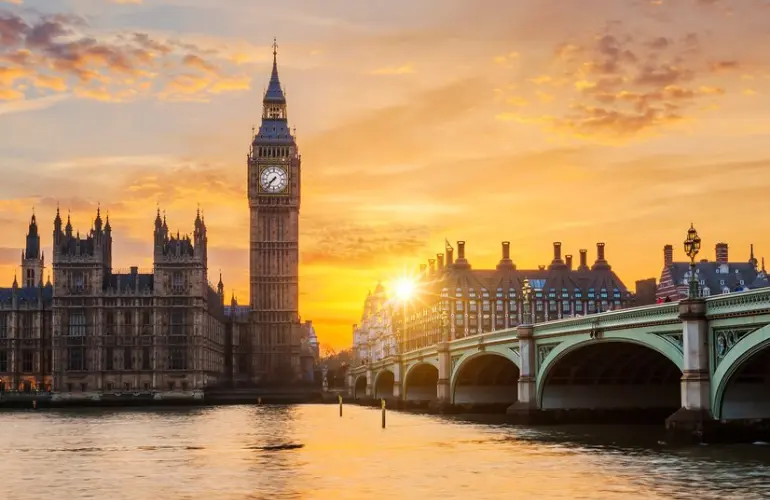Deciding on the best time to visit Europe highly affects the overall experience. Europe is a continent characterized by many countries and mixing cultures. There are varied climates and different landscapes. Knowing the right time to plan a trip will help you have the best weather conditions, avoid rows of crowds, and maximize your travel. For instance, if you’re planning to explore the Top Attractions in Croatia, understanding the seasonal nuances will enhance your visit to this stunning destination. Read this guide to get a few perspectives on the best times to visit specific regions in Europe in order to make your planning smooth.
Choosing the best time to visit Europe Depending on Climate
The right time to visit Europe hinges greatly on the variation of climate you prefer. Europe has four equally-defined seasons, and each has its own pros.
Spring: Perfect for Temperate Climates and Blooming
March is a best time to visit Europe. Temperatures range from 10 to 20 degrees Celsius throughout this season. Other than that, colors stay bright and numerous festivals fill spring in most cities and countryside areas of Europe. The cherry blossom in Paris, tulip fields in the Netherlands, and much other flower festival taking part of all the continent make Europe a shiny and colorful place in spring. For more information, visit here .
Spring, however, is not as crowded, unlike the summer months, so it’s a great time to travel if you are assured a very hassle-free and enjoyable trip, especially to big and busy cities like Rome, Barcelona, and Vienna.
Summer: Great for beach trips and festivals
Summer, from June to August, is high time for travel through Europe. The overall temperature is pretty agreeable now, between 20°C and 30°C (68°F to 86°F), making it the right time for beach holidays on the coast of the Mediterranean, traveling around historical cities, or being in harmony with open-air festivities. Cultural events, music festivals, and open-air concerts abound in summer.
Popular summer destinations include the Greek Islands, the French Riviera, and cities like Amsterdam and Edinburgh. But this is also high season, and places are likely to be packed with tourists. It pays to book accommodations and travel early to get the greatest choice of options.
Autumn: Good for Pleasant Weather and Lower Crowds
Autumn, running from September through to November, stands to be another best time to visit Europe. During this time of the year, the temperature holds mild, between 15°C and 25°C and is, moreover, less crowded with the tourist masses. It’s even a better time for those walking tours around the cities and areas of Europe. One may find fall foliage in parts like Bavaria and Loire Valley with really spectacular sceneries during such scenic drives or on hikes.
Autumn is as well the perfect time for everyone who loves good food and good wine. After all, this is when lots of harvest festivals, wine tastings, and food tours of various regions around Europe take place. Besides that, anyone who loves good food and relishes truffles and grape-harvesting season should make a stop by Europe, as that is more than a good idea—it is more of a highlight that one cannot do without seeing.
Winter: Relishing the Holiday Cheer of Europe
Winter—December to February—reveals another beauty of Europe. Although the days are cold with temperatures varying from 0°C to 10°C, winter lights up the whole continent with holiday markets, Christmas lights, and seasonal activities. This is the season for festive markets; the most famous of these are in Vienna, Prague, and Munich for their Christmas markets. Here, you will find holiday delicacies and handmade gifts.
For those keen on sports amidst cold weather, there are excellent possibilities for skiing and snowboarding in the Alps. Winter is also a great time for visiting highlighted touristic destinations, with fewer crowds and relative peace.
Planning Your Visit for Top Regional Highlights
Europe is large, and its best time to visit Europe may be different in each region. For example, in the countries of Southern Europe like Spain, Italy, and Greece, aside from the summer heat, it’s spring and autumn that are favorable. Northern Europe, including Scandinavia and the Baltic States, is best visited during summer to avoid the cold weather.
With its big winter sports countries like Austria or Switzerland, Central Europe kindly invites snow-lovers. Big winter sports states such as Austria and Switzerland belong to Central Europe. Eastern Europe is an all-year destination with cities like Budapest or Prague culturally pulsating, come rain or shine.
When is the best time to visit Europe for good weather?
The best time to visit Europe for good weather: from spring (March to May) to autumn (September–November), when the temperatures are mild and pleasant.
When are the busiest months in Europe for travel?
The busiest months are June, July, and August during the summer season when tourist activity is at peak.
Any particular festivals or events that can be considered on a trip to Europe and taken care of while planning one?
Europe sees more than its fair share of festivals and events the year through, some of which are Oktoberfest in Munich (September-October), the Cannes Film Festival (May), and Christmas markets (December).
Is winter a good time to visit Europe?
Winter is generally a great time to visit for the festive holiday markets and winter sports; plus, you will find fewer crowds. However, be prepared for cold weather.
How do I steer clear of crowds when visiting popular European destinations?
Travel during europe-travel.html the shoulder seasons of spring and autumn. Also, visit the less popular destinations, and make bookings for accommodation.
Conclusion:
There are always the best time to visit Europe, on which weather, the nature of activities you want to involve yourselves in, and avoiding crowds come into the question. Spring and autumn promise fair weather and only a few tourists, summer is best for beach and festivals lovers, and winter is all about the festive atmosphere with holiday markets and winter sports. For all these reasons, you would be able to do precise planning according to your interest and a wonderful European adventure.




